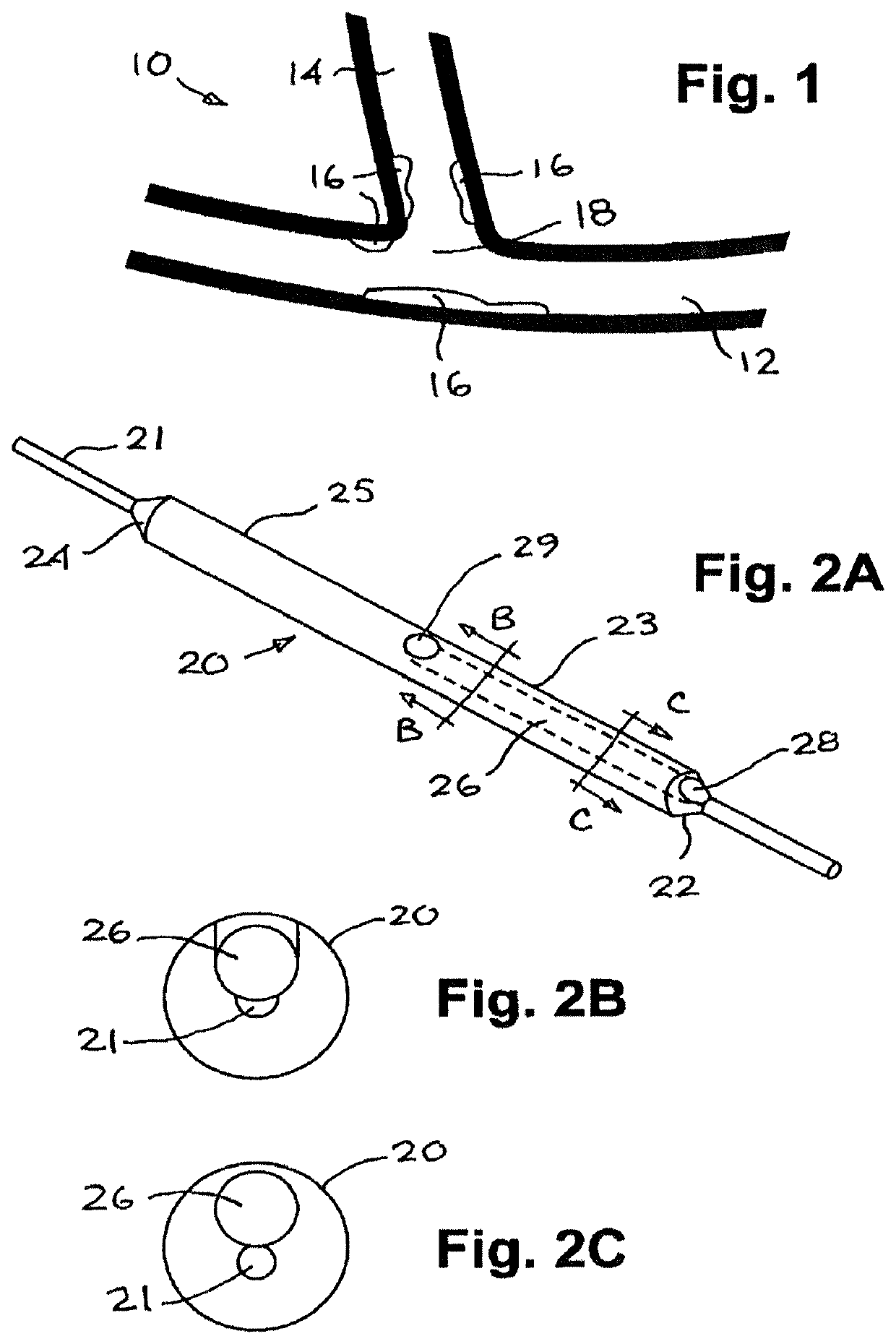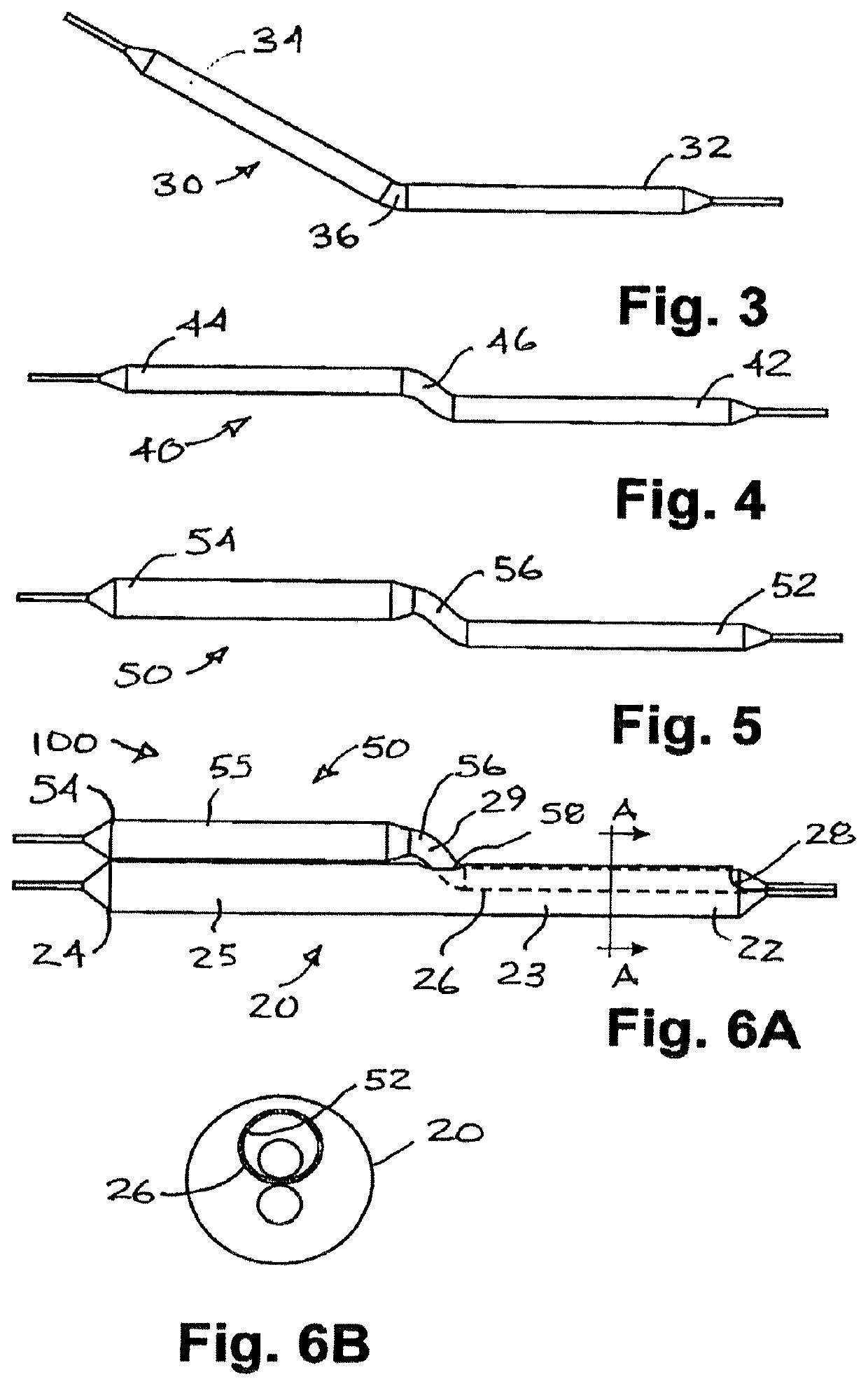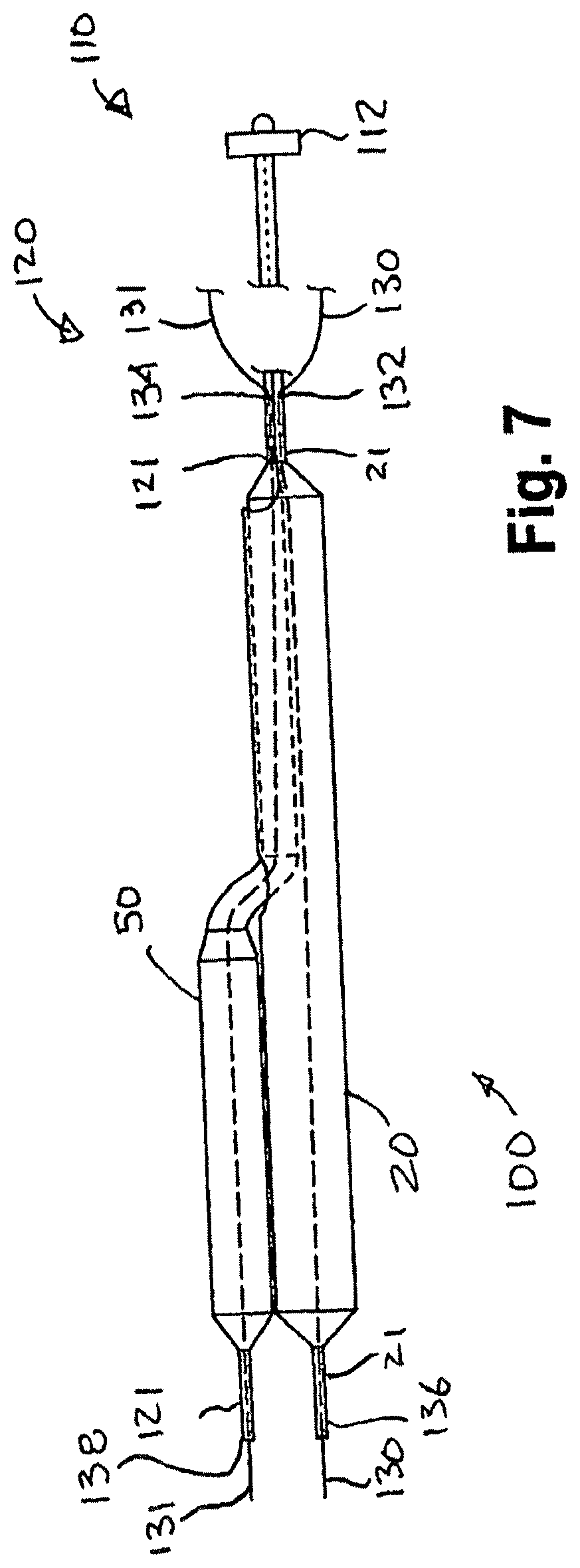Bifurcated dual-balloon catheter system for bifurcated vessels
a dual-balloon, bifurcated technology, applied in the direction of balloon catheters, stents, guide wires, etc., can solve the problems of unproven success, overlap of balloons on one side of the main branch, and inability to accurately position the stents. , to achieve the effect of high accuracy
- Summary
- Abstract
- Description
- Claims
- Application Information
AI Technical Summary
Benefits of technology
Problems solved by technology
Method used
Image
Examples
Embodiment Construction
[0035]FIG. 1 shows a typical bifurcated vessel 10 of the T-type comprising a main vessel 12 and a side branch vessel 14 extending therefrom and having plaque or lesions 16 at or about the juncture 18 of the vessels 12, 14.
[0036]The preferred embodiment of the first or main branch balloon is illustrated at 20 in FIG. 2A in its expanded state. The main branch balloon 20 is disposed on a portion of a catheter 21 which extends through the main branch balloon 20. Catheter 21 is used to deploy the balloon 20 to the bifurcated vessel region through the use of guide wires (not shown in FIG. 2A) as well as to communicate inflation fluid to the balloon 20. The portion of the catheter 21 within the balloon 20 is not shown (with hidden lines) for sake of clarity. Similarly, the catheter 21 may contain one or more lumens, which are also not shown for sake of clarity. Main branch balloon 20 has a proximal end 22 and a distal end 24. When the terms proximal and distal are used herein, they normall...
PUM
| Property | Measurement | Unit |
|---|---|---|
| angle | aaaaa | aaaaa |
| angle | aaaaa | aaaaa |
| relative angle | aaaaa | aaaaa |
Abstract
Description
Claims
Application Information
 Login to View More
Login to View More - R&D
- Intellectual Property
- Life Sciences
- Materials
- Tech Scout
- Unparalleled Data Quality
- Higher Quality Content
- 60% Fewer Hallucinations
Browse by: Latest US Patents, China's latest patents, Technical Efficacy Thesaurus, Application Domain, Technology Topic, Popular Technical Reports.
© 2025 PatSnap. All rights reserved.Legal|Privacy policy|Modern Slavery Act Transparency Statement|Sitemap|About US| Contact US: help@patsnap.com



